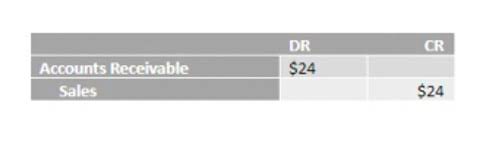
Isolate the variables to determine what is impacting the earnings of the business. This factor is a highly debated topic, and the reality is that if you are looking at this cost as anything else, you are mixing variables. Using this approach, COGS includes product costs and the variable costs incurred for fulfillment and operations. A CPG business has five main levers where your margins can change, and your COA should be organized to make those levers obvious and apparent.
Key Accounting Considerations for Consumer Packaged Goods (CPG) Companies
Companies that fail to adapt to these changes—or that make suboptimal choices—will be left behind by more thoughtful, action-oriented competitors. When CPG companies raise their prices to offset commodity-price hikes, as they did in the era of expansion, they enjoy strong returns. But when they aren’t able to pass on price increases to consumers, as was the case in the early 2000s, margins and TRS suffer. No matter what investment decisions a company makes, one key to success will be its ability to allocate resources quickly to the businesses that will yield the highest returns.2 2.

Devise a technology-enabled ESG strategy to help create value for all stakeholders
Not all growth is coming from emerging markets; companies must identify and invest in pockets of growth in developed markets as well, particularly as growth in emerging markets slows. In the United States, for example, the spending power of certain demographic groups, such as baby boomers and Hispanics, is significant and growing. The “value” segment, which flourished during the recession, continues to appeal to a broad swath of consumers. These and other “niche” opportunities in developed markets can hold as much growth potential as entire countries. Colgate-Palmolive, for one, has launched products targeting Hispanics; P&G has introduced new products and brands to compete in lower price tiers. With volume recovery likely pushed back until the second half of 2024 due to budget-constrained consumers, CPGs are creatively using marketing, innovation and premiumization to improve margins and strengthen customer relationships.

How clear are we on Cost of Goods Sold?
That means COGS has already eaten 40% of your revenue; at 2.5x MER, that’s another 40% of your P&L. This is a really important one, particularly in CPG, because this is where the operating leverage comes in. Let’s use gyms and fitness centers during COVID-19 as an example — a business model with a high degree of operating leverage. Companies with low degrees of operating leverage have more agility and can shrink expenses if revenue goes down. Companies with high fixed cost structures (SaaS, Manufacturing) can grow revenues without growing expenses as much, meaning the net income expands faster. A properly organized COA enables you to perform a robust business analysis and understand the financial levers at your disposal.
The cost of delivering products can change.
Church & Dwight, for example, strategically narrowed its focus from 14 to seven power brands, allocating more resources to areas with the highest potential for growth, profitability and competitive advantage. As supply chain challenges stabilize, https://www.bookstime.com/ the race is on to recapture distribution lost to service issues and to capitalize on foundational investments in data and technology. The question is whether innovation and premiumization can help drive consumer purchasing and strengthen margins.
- Accrual accounting is the principle that financial transactions should be recorded when goods and services are provided, rather than when the payment is made or received.
- Average total assets refer to the balance sheet information over the same specified time period.
- These and other “niche” opportunities in developed markets can hold as much growth potential as entire countries.
- They are also partnering with predictive analytics firms to gauge a consumer’s lifetime value even before that consumer buys a product from the company.
- Consumer-goods companies that develop an execution edge will continue to drive value creation and financial performance in the years to come.
- These companies typically have a large amount of inventory on hand, which can be costly to maintain.
Accrual accounting gives you a broader picture of your real-time finances and allows you to make better decisions about sales tactics and market trends. Accrual accounting makes it easier to analyze your finances period to period cpg accounting and understand your cost of goods sold. As companies in the consumer markets industry determine how best to prepare for these tax changes, they should consider potential actions in the context of broader business challenges.


As mentioned, profit margins are always a key part of income statement analysis, but profit margins in CPGs can be unique. This is because many CPG companies have developed streamlined production facilities with the advantage of economies of scale to lower the overall cost of goods sold and create a higher gross profit margin. We’ve also just done some new research as part of our 2021 Commercial Excellence Benchmarking Survey. And when we asked winners what they’re focusing on now, those who have figured out RGM are turning their eye on supply chain and marketing investment. That’s probably not surprising, since these three pieces—RGM, supply chain, and marketing investment—are the biggest cost drivers.
Getting Started with CPG Trade Accounting
- It should build capabilities for S/4HANA and beyond at scale so that it can both deliver and benefit from the solution.
- Already, these changes are compelling CPG companies to rethink how they do business and pursue growth.
- Leading CPG companies maintain a comprehensive library of typical ERP automation and process-simplification levers that can serve as a starting base for identifying SG&A efficiencies within all related end-to-end processes.
- These expenses are related to discounts between the product manufacturer and the retailer that are used to impact sales to the end customer.
- This guide will explain the accounting issues that arise for CPG brands during the complex sales and marketing function to retailers and distributors, and best practices for CPG accounting to improve accuracy and save time.
They should identify and carefully assess potential targets or partners in emerging markets. And they should be financially prepared to pounce on an M&A opportunity when it arises—specifically, by reducing their debt and loading up on cash. Every CPG company must undertake a rigorous risk analysis—including an assessment of “tail” risks—for major commodities across its entire supply chain.
